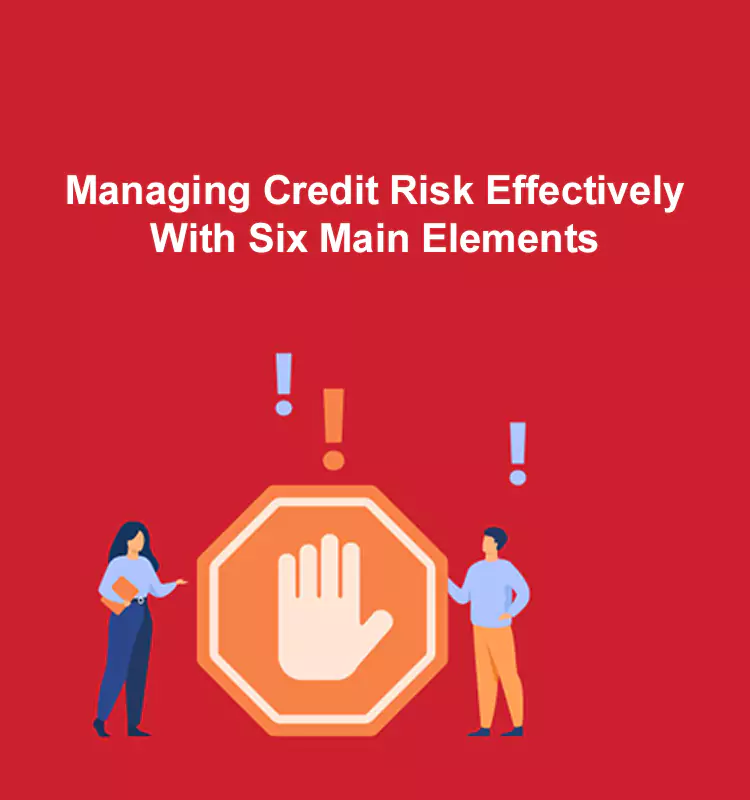Managing Credit Risk Effectively with Six Main Elements
Credit risk management is an essential part of any financial institution, as it helps to ensure that they can meet its financial obligations and maintain a healthy cash flow. Credit risk refers to the potential for a customer or borrower to default on their loan or credit obligations, which can result in significant losses for the lender or creditor. To effectively manage credit risk, it is important to understand and utilize the six main elements of credit risk management.
Let us learn more about credit risk management and how one can manage credit risk effectively with six main elements.
What Is Credit Risk Management?
Credit risk management in finance refers to the process of identifying, assessing, and mitigating the potential risks associated with extending credit to customers or borrowers. This includes assessing the creditworthiness of potential customers, setting appropriate credit limits and terms, monitoring the creditworthiness of existing customers, and implementing strategies to mitigate risk and minimize the potential for default.
The goal of credit risk management is to maximize a lender or creditor’s return on investment while minimizing the risk of losses. This is accomplished by using a combination of tools and techniques such as credit scoring and analysis, credit monitoring, risk mitigation strategies, contingency planning, and ongoing training and education for employees.
Credit risk management is a critical function in banking, lending, and other financial institutions and it is essential to maintain a healthy cash flow and meet financial obligations.
The Six Main Elements of Credit Risk Management
Understanding Credit Policy
The first element of credit risk management is a thorough understanding of the institution’s credit policy. This includes understanding the types of credit products and services offered, as well as the credit criteria used to approve or deny credit applications.
A clear and well-defined credit policy is essential for identifying and managing potential risks and making informed decisions about which customers to extend credit to. By having a credit policy in place, financial institutions can also set appropriate credit limits and terms for each customer, which can help to reduce the risk of default.
Credit Assessment
The second element of credit risk management is the use of credit scoring and analysis tools. These tools help
financial institutions to analyze the creditworthiness of potential
customers and identify those who are most
likely to default on their loans or credit obligations.
Credit scoring and analysis tools use a variety of data, such as credit history, income, and employment information, to assign a score or rating to each customer. This score or rating can then be used to make more informed decisions about which customers to extend credit to and what credit limits and terms to set for each customer.
Credit Monitoring
The third element of credit risk management is the use of credit monitoring and surveillance tools. These tools help financial institutions to keep track of the creditworthiness of their customers over time and identify any changes or trends that could indicate increased risk.
For example, financial institutions may use credit monitoring tools to track customers’ credit scores or to monitor their credit reports for changes or new accounts. By using these tools, financial institutions can take initiative-taking measures to mitigate risk and prevent potential defaults or losses.
Risk Mitigation
The fourth element of credit risk management is the use of risk mitigation strategies. This can include things like collateral, guarantees, and other forms of security to reduce the risk of default.
For example, a financial institution may require a customer to provide collateral, such as a piece of property or equipment, to secure a loan. By using these strategies, financial institutions can reduce their overall risk and increase their chances of recovering any losses that may occur.
Contingency Planning
The fifth element of credit risk management is the use of contingency planning. This includes having a plan in place for dealing with potential defaults or other credit risks, including measures for recovering any losses that may occur.
For example, a financial institution may have a plan in place for dealing with a customer who defaults on their loan, such as steps for recovering the loan or selling the collateral. By having a contingency plan in place, financial institutions can be better prepared to respond to potential risks and minimize their impact.
Staying Updated
The sixth element of credit risk management is the use of ongoing training and education. This includes providing people with the knowledge and skills they need to effectively identify and manage credit risks, as well as keeping them up to date on new developments and best practices in the field.
For example, employees can be trained on how to use credit scoring and analysis tools, how to identify potential risks, and how to respond to potential defaults. By providing ongoing training and education, financial institutions can ensure that their employees are equipped to manage credit risks effectively and make informed decisions that help to protect the institution’s bottom line.
Conclusion
In conclusion, credit risk management is a crucial part of finance, as it helps financial institutions to identify, assess, and mitigate the potential risks associated with extending credit to customers or borrowers.
By utilizing these six main elements, businesses can better identify and manage potential risks and make more informed decisions about which customers to extend credit to. This can help to ensure that a business is able to meet its financial obligations and maintain a healthy cash flow.
संबंधित विषय

- Financial Products and Services
How to Become a Good Income Taxpayer?
You have paid all your taxes. You have filled your Income Tax returns diligently.

- Financial Products and Services
Home Credit – Your One Stop Solution to Online Loans
There is a plethora of loans out in the market to cater to specific needs.
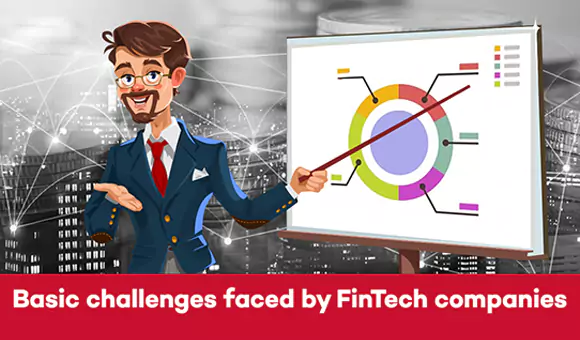
- Financial Products and Services
The Basic Challenges faced by the Fintech Industry
FINTECH is a combination of two words: financial technology. In simple words, Fintech is any technology and related innovations used in the various financial institutions.
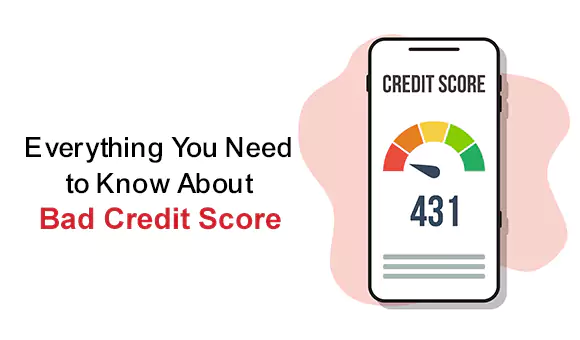
- Financial Products and Services
Everything You Need to Know About Bad Credit Score
When we are talking about credit – the level of trust business organizations has that you will repay the money you have borrowed – you can either have a good credit score or a bad credit score.

- Financial Products and Services
Ways to Manage Finances When You Have Dependents?
When you have dependents (children & parents) on the top of your head, earning income to save and invest becomes a derivative.
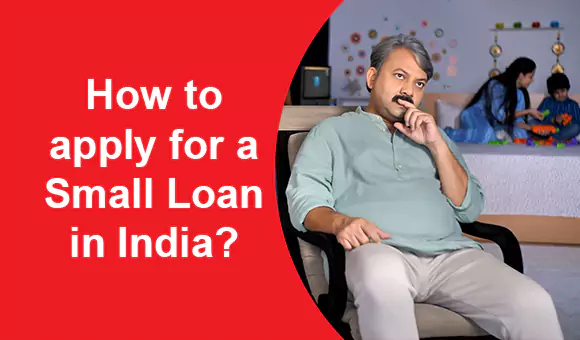
- Financial Products and Services
How to apply for a Small Loan in India?
Getting a loan sanctioned for small businesses is extremely significant.

- Financial Products and Services
What Are The Benefits of The Home Credit Ujjwal EMI Card?
We all have goals in life, whether it’s to buy the best smartphone to pursue our passion for photography or to buy the latest refrigerator for our mothers to proudly display in their kitchens.

- Financial Products and Services
Ujjwal EMI Card vs Credit Card: How To Shop on EMI?
Nowadays, shopping on EMI is the new trend. On EMI, you can buy anything from electronics to home appliances.
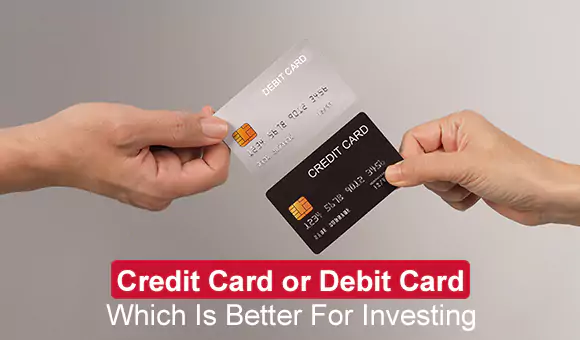
- Financial Products and Services
Credit Card or Debit Card – Which Is Better For Investing
The mantra for a good financial health is to save money from income and then go about your monthly expenditures.

- Financial Products and Services
Can we Apply for Credit Card and Loan at the Same time?
If you are only concerned whether you can apply for a credit card and loan at the same time, then the answer is yes, you can!

- Financial Products and Services
5 Reasons to Get a Small Business Loan
Whenever you’re considering a business loan, it’s quite common to hear different opinions on its application & use.

- Financial Products and Services
Closing your Credit Card without hurting your Credit Score
Are you thinking to cancel your credit card? Before you think of cancelling your credit card, think twice!

- Financial Products and Services
8 Reasons To Apply Personal Loan From Home Credit
From time to time, we always have crucial decisions to make, and chances are that it will cost money!

- Financial Products and Services
How To Make the Most of Your Credit Card?
Today, we’re going to talk about credit cards, and how to make the most out of them.

- Financial Products and Services
Easy Financial Planning with a Personal Loan EMI Calculator
Managing finances is an integral part of our lives, and at times, unexpected expenses or opportunities may arise that require additional funds.

- Financial Products and Services
How To Choose The Right Credit Card?
In a world where financial transactions are increasingly digitized, credit cards have become an indispensable tool for managing our day-to-day expenses.
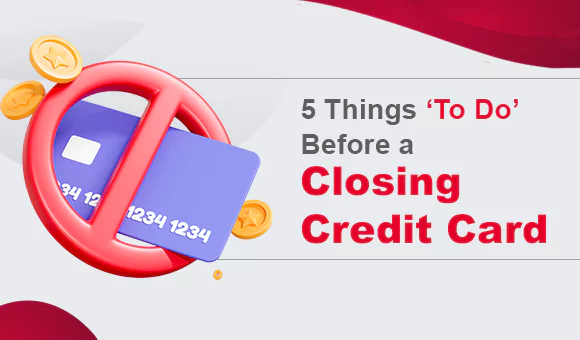
- Financial Products and Services
5 Things 'To Do' Before a Closing Credit Card
Don’t even think about canceling that card before you do these five things.
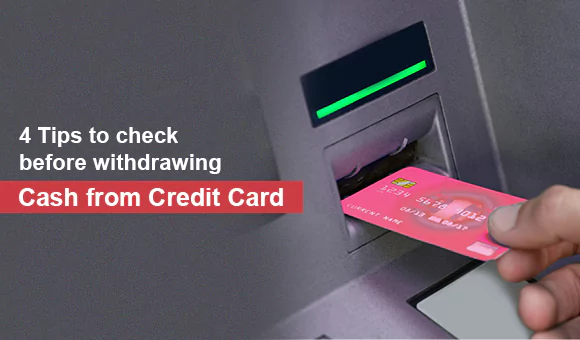
- Financial Products and Services
4 Tips to check before withdrawing Cash from Credit Card
Getting your first credit card can be exhilarating as it indicates you have finally arrived.

